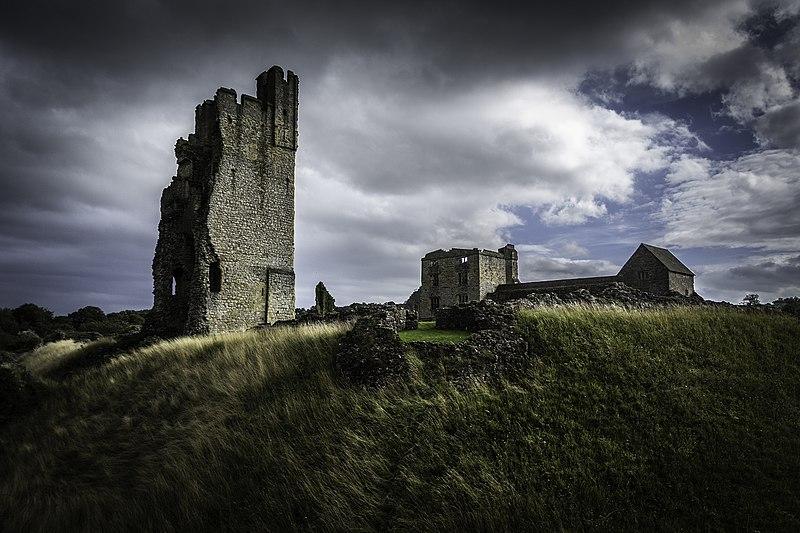
Over on our site on the Wars of the Roses we have begun a series of posts exploring the history of places of interest in [mainly] Yorkshire. The posts cover the medieval history of these castles, ports, towns, and some of the people who lived in them. There are some fabulous stories to be heard about some of these places. From very famous examples such as Kings and Queens, to much less well known stories. Combined, they paint a picture of how the North East, Yorkshire in particular, was governed in the late medieval era. Most are places that can be visited, though not all so do check the links on each page as they outline access.
Home of the Scrope family, this castle was built in the late 14th century. It is a popular tourist site and has a history covering the Hundred Yeaars War, Wars of the Roses, Mary Queen of Scots, and the English Civil Wars.
Consibrough Castle was held by the House of York in the build up to the Wars of the Roses. A major fortification it dominated the Don Valley and was one of the north’s most important strongholds from its foundation in the 12th century until the 15th century, when it began to fall into disrepair.
Helmsley Castle was held by Lord Roos as the Wars of the Roses burst into action. He was an ardent Lancastrian and paid for his loyalty to Henry VI and Margaret of Anjou with his life after being captured after the Battle of Hexham.
The City of Hull was purpose built in the late medieval era as a port from which supplies could be dispatched to English armies fighting the Scots. It was soon a major fortified commercial port, linked to the rise of the de la Pole family.
Pontefract Castle guarded the important river crossing at Ferrybridge and the Great North Road. As such it was of vital importance to the crown in the Medieval era, who held it rather than it being held by a regional magnate. Pontefract was the location that Richard II was sent to, and died at. It was at Pontefract that the Earl of Salisbury was beheaded following the Battle of Wakefield, and also the gaol and place of execution of Anthony Woodville 2nd Earl Rivers, and others in 1483.
The Honour of Richmond was a significant landholding in the late medieval era. It was Richmond that was nominally the Earldom held by Henry Tudor in his minority and exile.
Ripley Castle remains largely intact and is a popular picturesque visitor attraction. In the late middle ages it was held by the Ingleby family and is linked to a strange tale of a ‘widow’ of a man who lived for decades after the ‘widow’ status came about.
Sandal Castle is perhaps best known for the battle of Wakefield which took place on the ground outside the Castles walls. It has a long association with the House of York, and was a formidable fortress in the medieval era.
Scarborough has a large natural bay which made it a prime maritime site throughout the medieval era. A large castle dominates the skyline, and Scarborough played host to monarchs and navies during the course of its medieval history.
Skipton is ‘the Gateway to the Dales’ and as such has been an important strategic location throughout time. In the Medieval era it was used by the Normans as a stronghold from which they dominated the region. By the late Medieval period it was held by the Barons Clifford until the Yorkist victory at Towton. Then it passed through several hands, including Sir William Stanley and Richard duke of Gloucester, before being returned to the Clifford’s by the Tudor regime.
Spofforth Castle was held by the Percy Earls of Northumberland in the late Medieval era and as such was at the heart of the Percy-Neville Feud.
Castles Close to Yorkshire…
Lay just over the border into County Durham. The castle has a rich history. In the late medieval era it was home to the Neville family, until the family split following the death of the First Earl of Westmorland.
Leave a Reply
You must be logged in to post a comment.